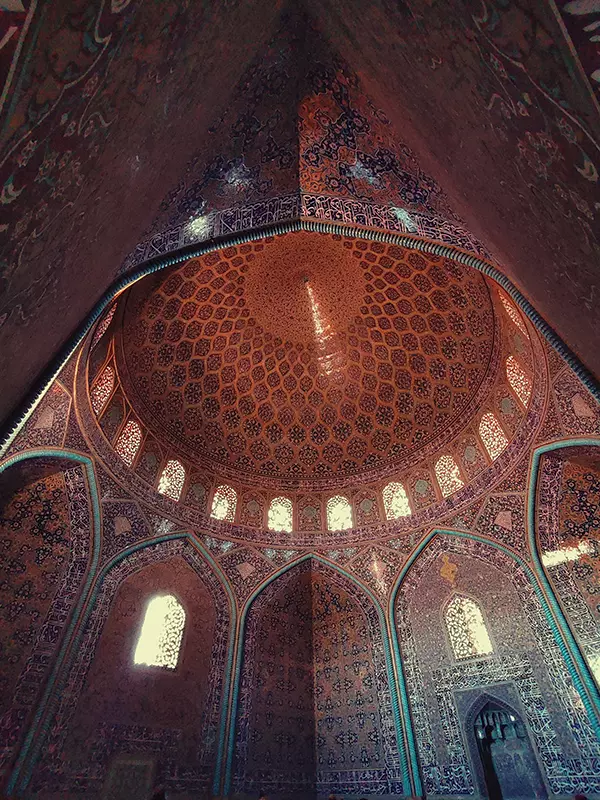
role of Iran
Isfahan city, also spelled Esfahan, is a historic city located in central Iran. It is the capital of Isfahan Province and is often referred to as "Nesf-e Jahan," meaning "Half of the World" in Persian, due to its historical and cultural significance. Isfahan city is situated about 340 kilometers (211 miles) south of Tehran, the capital city of Iran.
nesfe jahan has a rich history dating back to ancient times. It served as the capital of Persia during the Safavid dynasty (1501-1736) and was an important center of trade, art, and culture. The city's golden age was during the 16th and 17th centuries when it flourished under the patronage of Shah Abbas I.
One of the most famous landmarks in Isfahan city is the Naqsh-e Jahan Square, also known as Imam Square. This UNESCO World Heritage site is one of the largest squares in the world and is surrounded by significant architectural masterpieces. The square is bordered by the Imam Mosque (Shah Mosque), the Sheikh Lotfollah Mosque, the Ali Qapu Palace, and the Qeysarieh Portal, which leads to the bustling Grand Bazaar.
The Imam Mosque, with its magnificent turquoise dome and intricate tilework, is considered a masterpiece of Islamic architecture. The Sheikh Lotfollah Mosque, known for its unique and delicate designs, was built as a private mosque for the royal court. The Ali Qapu Palace, located on the western side of the square, served as the royal residence and a place for entertainment and receptions.
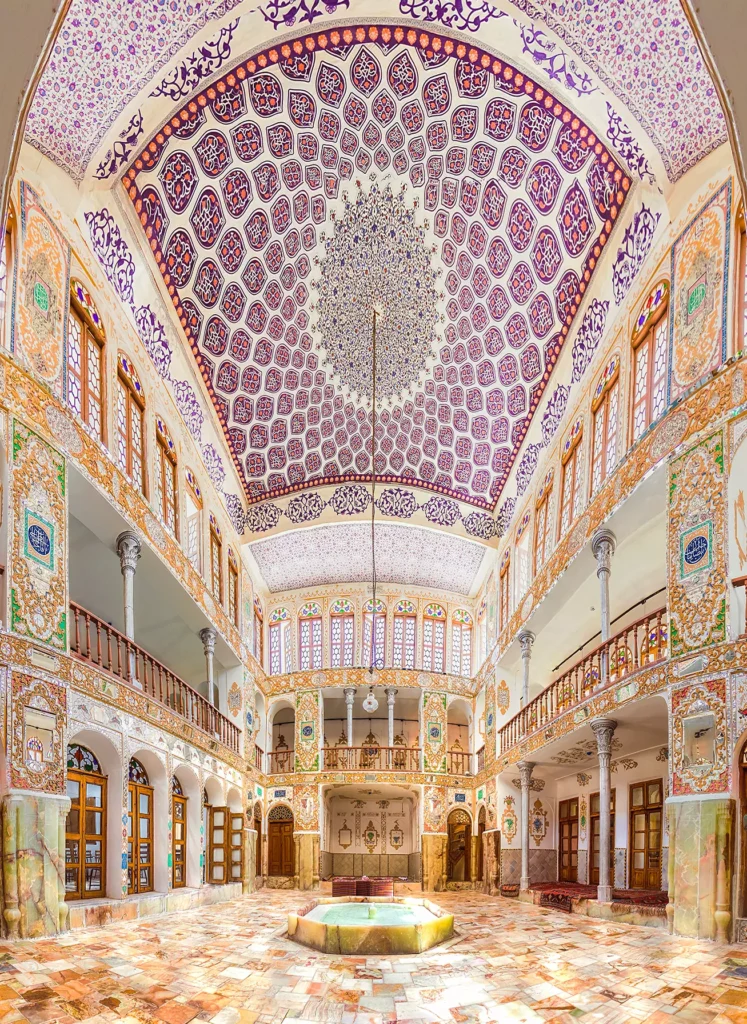
Isfahan city is also renowned for its remarkable bridges. The most famous is the Si-o-se Pol, or the Bridge of 33 Arches, which spans the Zayandeh River. The Khaju Bridge is another notable example, known for its intricate tilework and its function as a multi-purpose bridge, with pavilions and meeting rooms in the middle.
The city is home to numerous other architectural treasures, including the Jameh Mosque of Isfahan, a grand mosque with elements from different periods of Islamic architecture, and the Chehel Sotoun Palace, a beautiful pavilion surrounded by a garden.
nesfe jahan bazaars are vibrant and offer a wide range of goods, including traditional crafts, textiles, spices, and carpets. The city is renowned for its handicrafts, such as Persian carpets, enamel work, miniatures, and metalwork.
In addition to its historical and architectural significance, this is known for its pleasant climate, beautiful gardens, and tree-lined boulevards. The city’s main boulevard, Chahar Bagh Avenue, is flanked by gardens and is a popular place for leisurely walks. continues to be an important cultural and tourist destination in Iran, attracting visitors from around the world who come to explore its rich history, marvel at its architectural wonders, and experience its vibrant culture.
isfahan history
Isfahan has a long and illustrious history that dates back thousands of years. Here is an overview of its historical journey:
Ancient Origins: The region around Isfahan city has been inhabited since prehistoric times. Archaeological evidence suggests that settlements existed in the area as early as the 6th millennium BCE. The city itself was established during the Parthian Empire (247 BCE – 224 CE) and served as a provincial capital.
Islamic Era: With the advent of Islam in the 7th century CE, Isfahan became an important center of Islamic culture and scholarship. During the Umayyad and Abbasid caliphates, Isfahan flourished as a major city and a center of trade and learning.
Seljuk and Mongol Invasions: Isfahan city came under the rule of the Seljuk Empire in the 11th century, followed by the Mongol invasion led by Genghis Khan in the 13th century. The Mongols destroyed much of the city but spared its significant architectural and cultural heritage.
Timurid Period: In the 14th century, Isfahan experienced a revival under the Timurid dynasty. Timur (Tamerlane), the founder of the Timurid Empire, recognized the city’s strategic importance and made it a capital for a short period. Isfahan became a center for art, architecture, and scholarship during this time.
Safavid Dynasty: Isfahan reached the pinnacle of its cultural and political significance during the Safavid dynasty (1501-1736). Shah Ismail I, the founder of the Safavid Empire, made Isfahan his capital in the early 16th century. However, it was Shah Abbas I (1588-1629) who transformed Isfahan city into a masterpiece of architecture and a thriving center of commerce and culture.
Under Shah Abbas I, Isfahan underwent extensive urban planning and development. Magnificent monuments, mosques, palaces, bridges, and public buildings were constructed, including the famous Naqsh-e Jahan Square and its surrounding structures. The city became a hub of international trade and attracted artisans, scholars, and traders from different parts of the world.
Decline and Modern Era: After the fall of the Safavid dynasty, Isfahan city experienced a period of decline. The city faced numerous invasions, including those by the Afghans and Ottomans. Isfahan eventually came under Qajar rule in the late 18th century and witnessed some restoration and revitalization efforts.
In the 20th century, Isfahan played a significant role in Iran’s constitutional revolution and the modernization efforts under the Pahlavi dynasty. The city witnessed industrial development, infrastructure improvements, and the establishment of educational institutions.
Today, Isfahan city stands as a testament to its rich historical past, with its magnificent architectural heritage and vibrant cultural traditions. It remains one of Iran’s most iconic and beloved cities, attracting tourists and visitors from around the world who come to explore its historical sites and immerse themselves in its fascinating history.
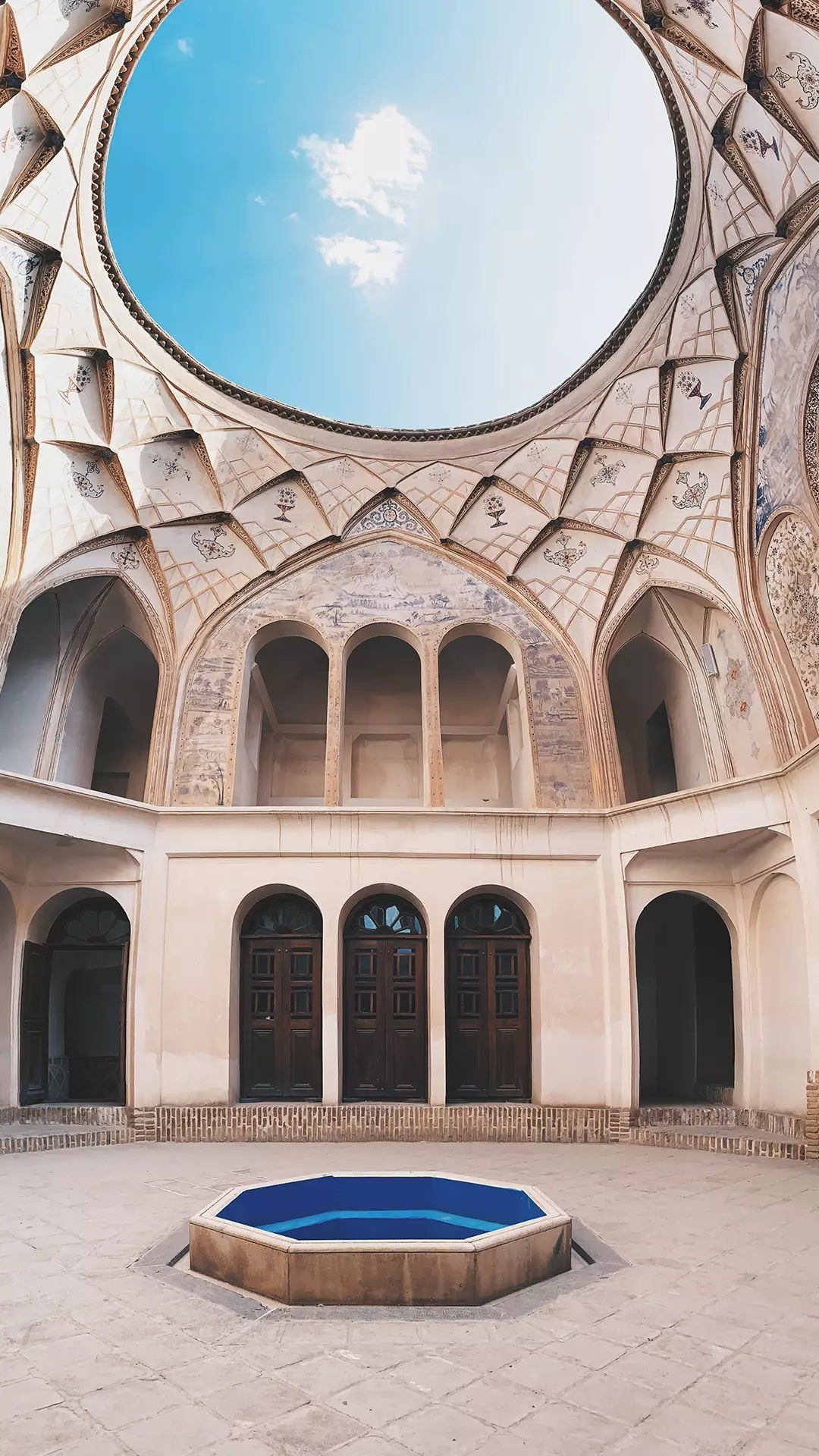
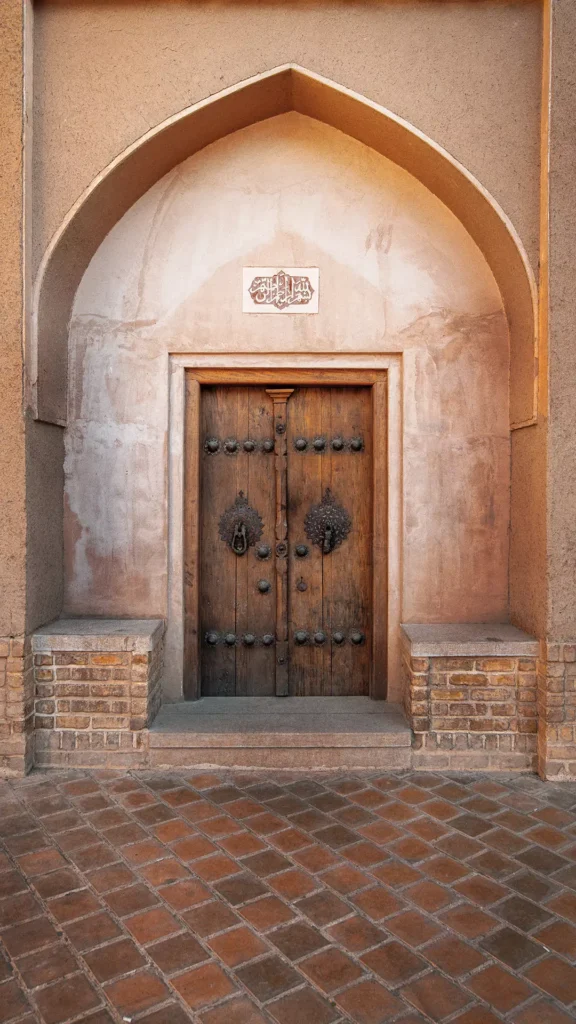
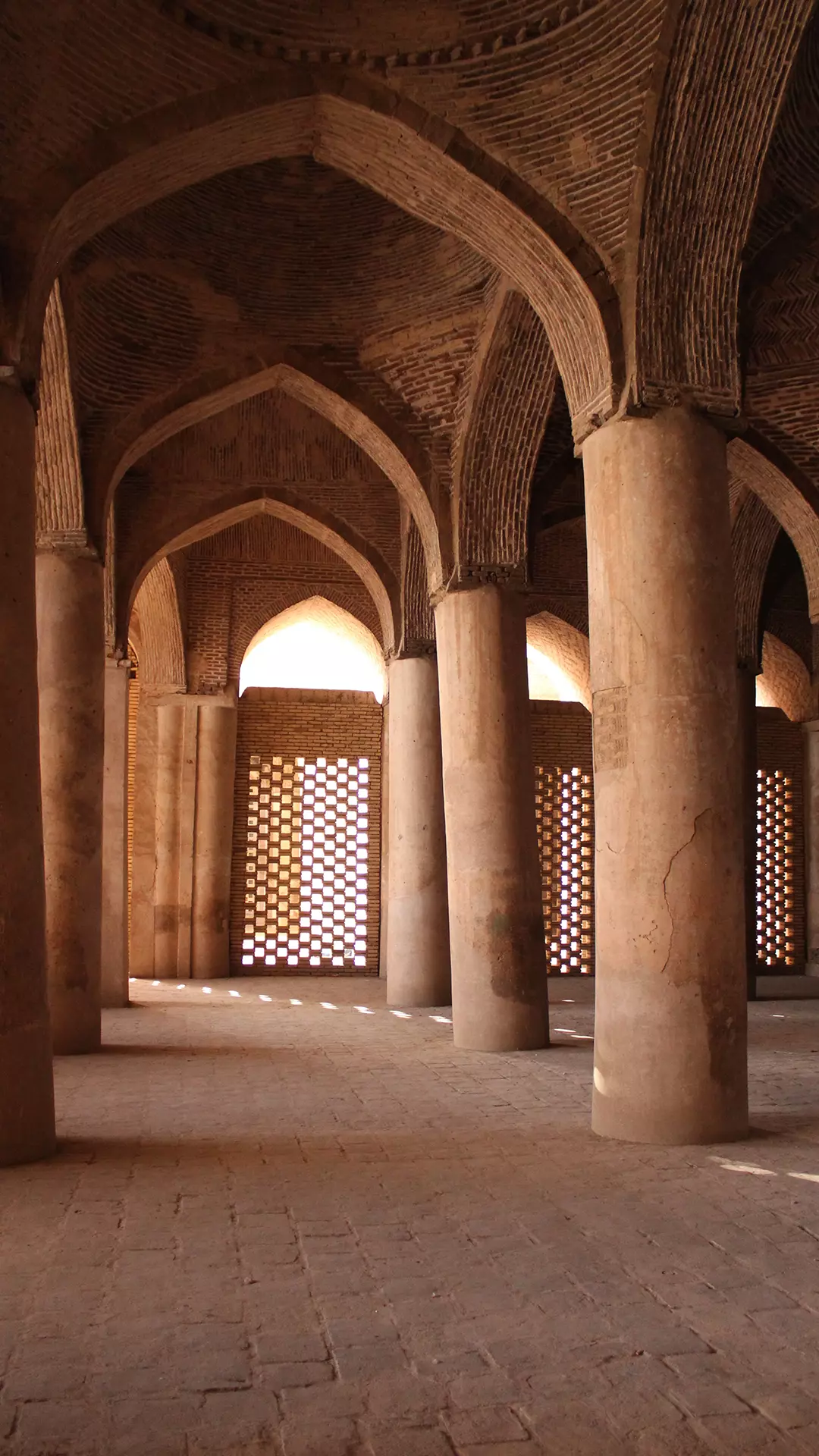
isfahan weather
Isfahan experiences a semi-arid climate with hot summers and cool winters. The city’s weather can be characterized by distinct seasonal variations. Here’s an overview of Isfahan’s weather patterns:
Summer (June to August): Summers in Isfahan city are hot and dry, with temperatures often soaring to highs above 35°C (95°F). The weather is generally sunny, and rainfall is scarce during this season. It is advisable to stay hydrated and seek shade or air-conditioned spaces to escape the heat.
Autumn (September to November): Autumn in Isfahan is characterized by mild and pleasant weather. Temperatures gradually cool down, with daytime highs ranging between 20°C (68°F) and 30°C (86°F). The nights become cooler, and occasional rain showers may occur, especially towards the end of the season.
Winter (December to February): Winters in Isfahan can be chilly, particularly during the nights. Daytime temperatures average around 8°C (46°F) to 15°C (59°F), while nighttime temperatures can drop close to freezing. Snowfall is rare but not unheard of, especially in the colder months of January and February.
Spring (March to May): Spring is a pleasant season in Isfahan city, with mild temperatures and blossoming vegetation. Daytime temperatures gradually increase from around 15°C (59°F) in March to 25°C (77°F) in May. Spring is generally a dry season, but occasional showers can occur, bringing freshness to the surroundings.
Isfahan is known for its bright and sunny weather throughout the year, with an average of over 300 sunny days annually. However, it’s important to note that weather patterns can vary from year to year, and it’s advisable to check local weather forecasts or consult up-to-date sources for the most accurate and detailed information before planning a visit to Isfahan.
isfahan population
As of my knowledge cutoff in September 2021, Isfahan’s population was estimated to be around 2.2 million people. However, please note that population figures may vary over time, and it is advisable to refer to the latest official sources for the most accurate and up-to-date information.
Isfahan is the third-largest city in Iran, following Tehran and Mashhad. It has historically been a populous and significant urban center due to its strategic location and rich cultural heritage. The isfahan city’s population has grown steadily over the years, fueled by factors such as urbanization, economic opportunities, and migration from rural areas.
Isfahan’s population comprises a diverse mix of ethnic and religious groups. The majority of the population consists of ethnic Persians, who are primarily followers of Shia Islam—the predominant religious denomination in Iran. Additionally, Isfahan city is home to a sizeable Armenian community, which has contributed to the city’s cultural diversity.
It is worth mentioning that population figures are subject to change, and it is advisable to consult official sources or recent statistical data for the most accurate and updated information on Isfahan’s population.
isfahan city best places to visit
Naghsh-e Jahan Square:
As mentioned earlier, Naghsh-e Jahan Square is a central highlight of Isfahan. It was built during the Safavid era and is not only an architectural masterpiece but also a social and cultural hub. The square is a popular gathering place for locals and visitors alike.
Armenian Quarter:
Isfahan city is home to a vibrant Armenian community, and the Armenian Quarter, known as Jolfa, is a must-visit area. It has its own distinct character with narrow alleys, old churches, and charming courtyards. The Vank Cathedral, located in this quarter, is a prominent attraction, featuring beautiful frescoes and a museum showcasing Armenian artifacts.
Isfahan Music Museum:
If you’re interested in Persian traditional music, the Music Museum is worth a visit. It offers insights into the history, instruments, and techniques of Iranian music. Visitors can enjoy live performances and demonstrations of various instruments.
Isfahan’s Gardens:
neseh jahan is famous for its exquisite gardens, reflecting the Persian love for nature and aesthetics. The Bagh-e Fin Garden in isfahan city, a UNESCO World Heritage site, is one of the oldest surviving Persian gardens and features stunning architecture, water features, and abundant greenery. The Hasht Behesht Garden and Chehel Sotoun Garden are also worth exploring.
Isfahan’s Traditional Cuisine:
offers a delightful culinary experience with its unique dishes. The city is known for its variety of kebabs, including barg (tenderloin), koobideh (minced meat), and jujeh (chicken) kebabs. Traditional Persian stews like khoresht-e mast (yogurt stew) and fesenjan (pomegranate and walnut stew) are also popular. Don’t miss trying gaz, a delicious traditional sweet made from pistachios and rosewater.
Zayandeh River:
The Zayandeh River flows through Isfahan city, adding to the city’s charm. It has historically been a vital water source for agriculture and urban life. You can enjoy a stroll along the river’s banks or take a boat ride to appreciate the beauty of the city’s bridges and surrounding scenery.
Isfahan’s Handicrafts:
Isfahan is renowned for its traditional handicrafts. The city’s bazaars are excellent places to explore and purchase local crafts, including intricately designed carpets, enamelwork, pottery, calligraphy, and miniature paintings. The Qeysarieh Bazaar, located near Naqsh-e Jahan Square, is a bustling market where you can find a wide range of goods.
Isfahan Music Museum:
Isfahan is known for its rich musical heritage, and the Isfahan Music Museum provides a comprehensive exploration of Persian music. The museum showcases various traditional instruments, audiovisual presentations, and interactive exhibits, allowing visitors to gain a deeper understanding of Persian musical traditions.
Isfahan’s Sofreh Khanehs:
Sofreh Khaneh is a unique cultural practice in Isfahan city where people set up traditional spreads on the floor, typically in their homes or gardens, to enjoy meals. These spreads consist of colorful Persian rugs, cushions, and low tables adorned with a variety of dishes and delicacies. It is an opportunity to experience Iranian hospitality and savor traditional cuisine in an authentic setting.
Isfahan’s Bridges:
Isfahan is renowned for its picturesque bridges that span the Zayandeh River. In addition to Si-o-se Pol and Khaju Bridge, there are several other remarkable bridges worth exploring. Marnan Bridge, Shahrestan Bridge, and Choobi Bridge are notable examples, each with its own architectural style and historical significance.
Isfahan’s Traditional Crafts:
nesfe jahan has a long-standing tradition of producing exquisite handicrafts. The isfahan city is particularly known for its intricate metalwork, where skilled artisans create beautiful copper and brass items such as trays, vases, and decorative pieces. Isfahan is also famous for its delicate miniature paintings, intricately woven textiles, and stunning enamelwork.
Isfahan’s Palaces:
In addition to Chehel Sotoun Palace, Isfahan boasts other palaces that are architectural gems. The Aali Qapu Palace, with its grandeur and magnificent stucco decorations, offers stunning panoramic views of the city from its rooftop. The Hasht Behesht Palace, known for its beautiful garden and exquisite tilework, was once a royal residence and is now open to the public.
Isfahan’s Caravanserais:
Isfahan’s strategic location on ancient trade routes made it an important center for commerce and hospitality. The isfahan city has several caravanserais (historical roadside inns) that once provided accommodation and facilities for merchants and their caravans. Some notable caravanserais include the Shah Abbas Caravanserai, Talar-e Ashraf Caravanserai, and Sadr Caravanserai, which have been restored and repurposed as cultural and commercial spaces.
Isfahan’s Festivals:
Isfahan hosts various festivals throughout the year, providing opportunities to celebrate and experience the city’s culture. The Nowruz Festival marks the Persian New Year and is celebrated with joyous events, including traditional music, dance, and street performances. The Isfahan International Festival of Street Theater is another exciting event, where streets and squares come alive with captivating theatrical performances.
Isfahan’s Universities:
Isfahan city is home to several prestigious universities and educational institutions, attracting students from different parts of Iran and around the world. University of Technology, University of Medical Sciences, and University of Art are among the prominent educational institutions in the city.
Isfahan’s rich history, architectural wonders, vibrant culture, and warm hospitality make it a city of endless exploration and enchantment. Whether you’re strolling through its grand squares, savoring its delectable cuisine, or immersing yourself in its artistic traditions, Isfahan offers a captivating experience for travelers seeking to delve into the heart of Iran.
These are just a few highlights of Isfahan city, but the city has much more to offer in terms of history, culture, and exploration. Its welcoming people, stunning architecture, and vibrant atmosphere make it a captivating destination for travelers seeking an authentic Persian experience.
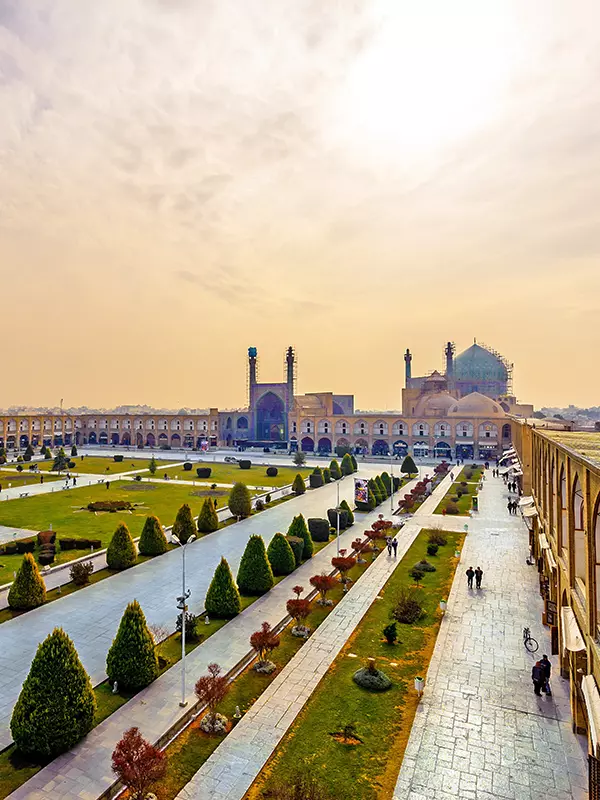
Naghsh-e Jahan Square
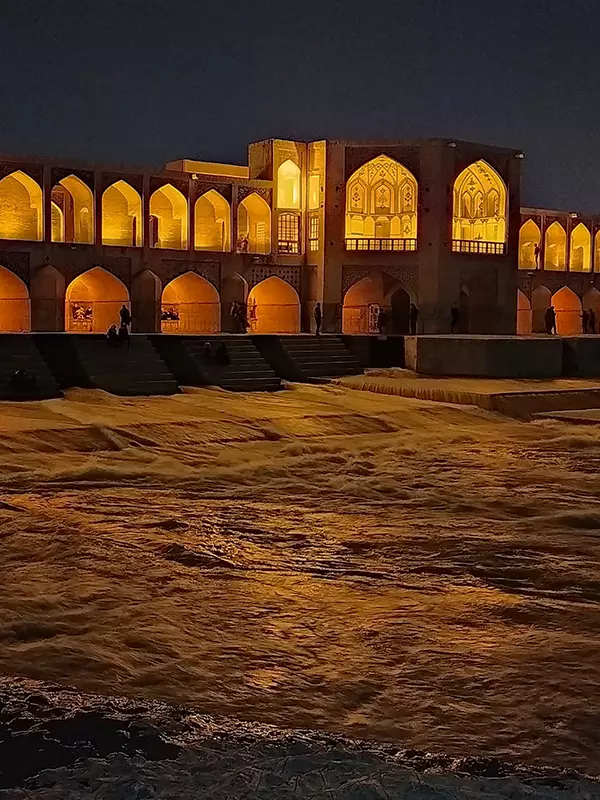
Zayandeh Rive (Zayandeh Rood)
